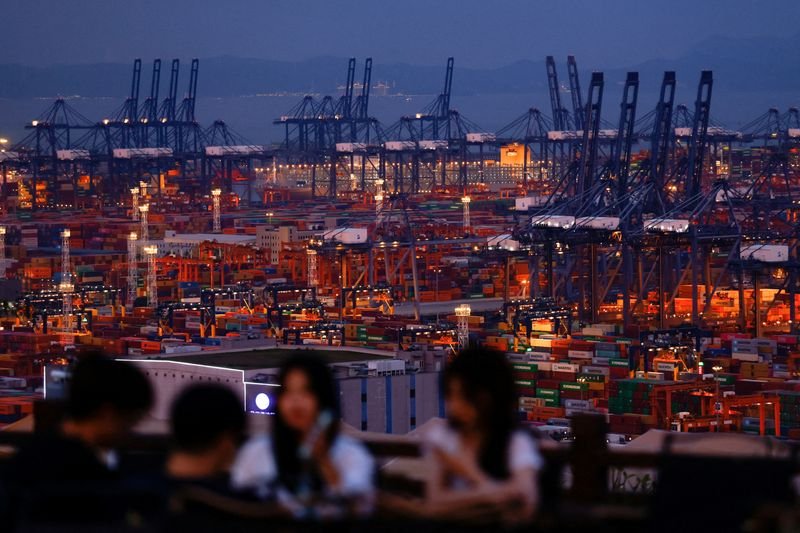China’s July Exports Exceed Expectations Amid Urgent Preparations for Tariff Deadline
In July, China’s export figures surpassed analysts’ predictions, driven by a concerted effort to meet deadlines imposed by U.S. tariffs. This surge reflects the nation’s responsiveness to market pressures and its evolving trade dynamics.
Strong Export Performance
China’s July exports recorded an impressive growth rate, outshining forecasts made by numerous economists. This unexpected rise has invigorated discussions on how Chinese manufacturers are navigating the complexities of international trade, especially in light of ongoing tariff tensions with the United States.
Key Drivers Behind Export Growth
Several factors contributed to this notable increase in exports. Chinese manufacturers ramped up production as they aimed to fulfill orders before potential tariff hikes took effect. This proactive approach indicates a robust capacity for adapting to swiftly changing market conditions. Industries such as electronics and machinery, which have significant demand in international markets, particularly benefitted from this heightened activity.
Insights into Trade Tactics
China’s export strategies reveal an agile approach in responding to the evolving landscape of global trade. By adjusting production schedules and inventory levels, manufacturers positioned themselves advantageously ahead of potential tariffs. This strategic flexibility not only helped mitigate losses but also showcased the resilience of China’s supply chains.
Geographic Distribution of Exports
Geographically, the United States remains a critical market for Chinese exports. Despite the looming tariff threats, demand for various Chinese goods has persisted. Products ranging from consumer electronics to apparel continue to find their way into American markets. This trend underscores the interdependence between the two economies.
Manufacturing Adaptations
One notable aspect of this export boom is the adaptive measures taken by manufacturers. With tariffs acting as a looming challenge, businesses have been incentivized to explore alternative sourcing and production methods. Some manufacturers have begun relocating parts of their production to countries that are not subjected to the same tariffs, a strategy known as “tariff engineering.” This approach not only protects margins but also allows companies to maintain competitiveness in the global market.
Effects on Supply Chains
The urgency to meet export demands has also had a ripple effect on supply chains. Logistics networks have been under pressure to deliver materials and finished products swiftly. Shipping companies and freight forwarders have had to adjust their strategies to accommodate this increased volume of exports while ensuring compliance with trade regulations.
Challenges Ahead
While July’s export figures are promising, challenges remain on the horizon. The ongoing trade dispute with the U.S. continues to cast uncertainty over future trade relations. Tariffs can directly influence pricing and demand, requiring businesses to continuously adapt. As manufacturers adjust their strategies, they are also keeping a close eye on potential shifts in tariff legislation that could alter the economic landscape.
The Role of Global Markets
China’s export performance is not solely dependent on U.S. demand. Broader global market trends also play a substantial role. Economic fluctuations in Europe and emerging markets can impact Chinese exports, making it crucial for manufacturers to diversify their trading partners. Strengthening relationships with non-U.S. markets could provide a buffer against tariff impacts.
Future Projections
Looking ahead, analysts remain cautiously optimistic. The adaptability shown by Chinese manufacturers can serve as a key advantage in overcoming potential barriers to trade. By leveraging innovation and efficiency, they are likely to maintain their competitive edge, even as trade policies evolve.
In summary, China’s impressive export growth in July highlights the nation’s resilience and strategic adaptability in the face of economic challenges. As manufacturers navigate a complex international landscape shaped by tariffs and trade dynamics, their ability to respond quickly will be essential for future success.
